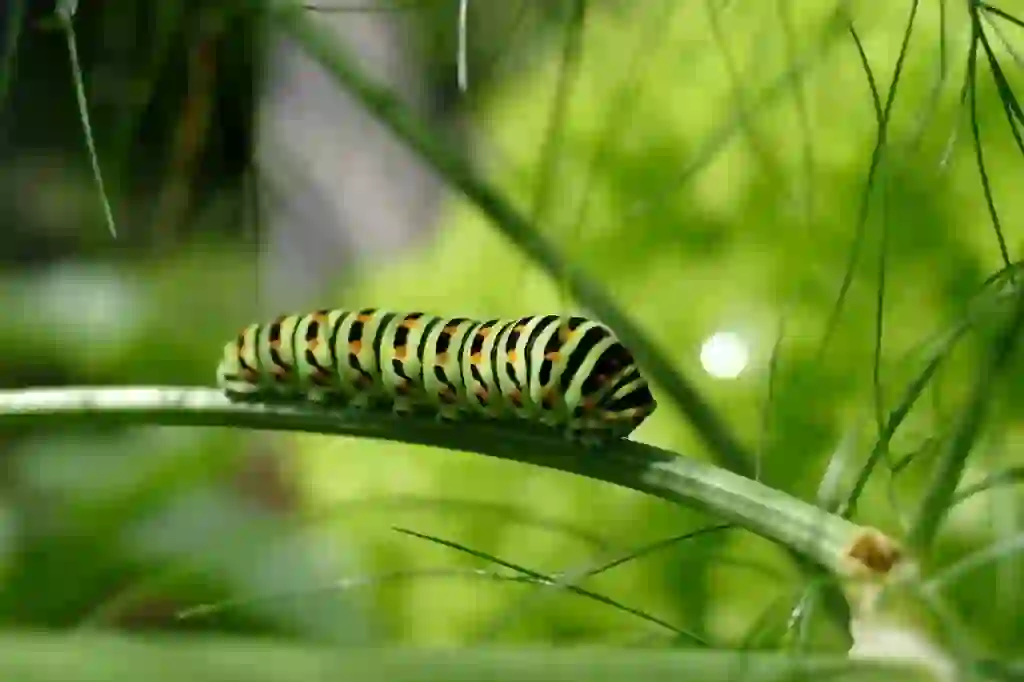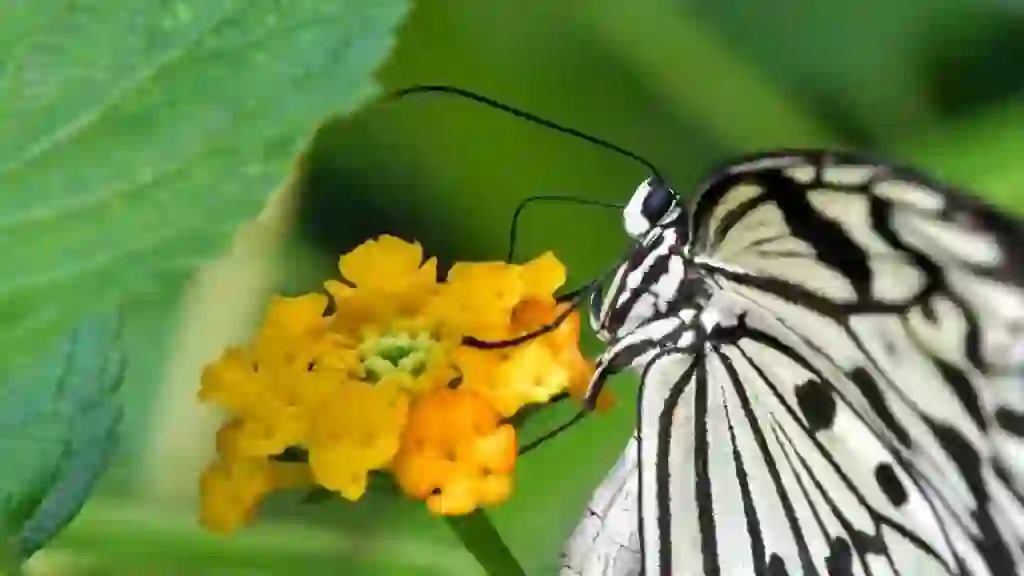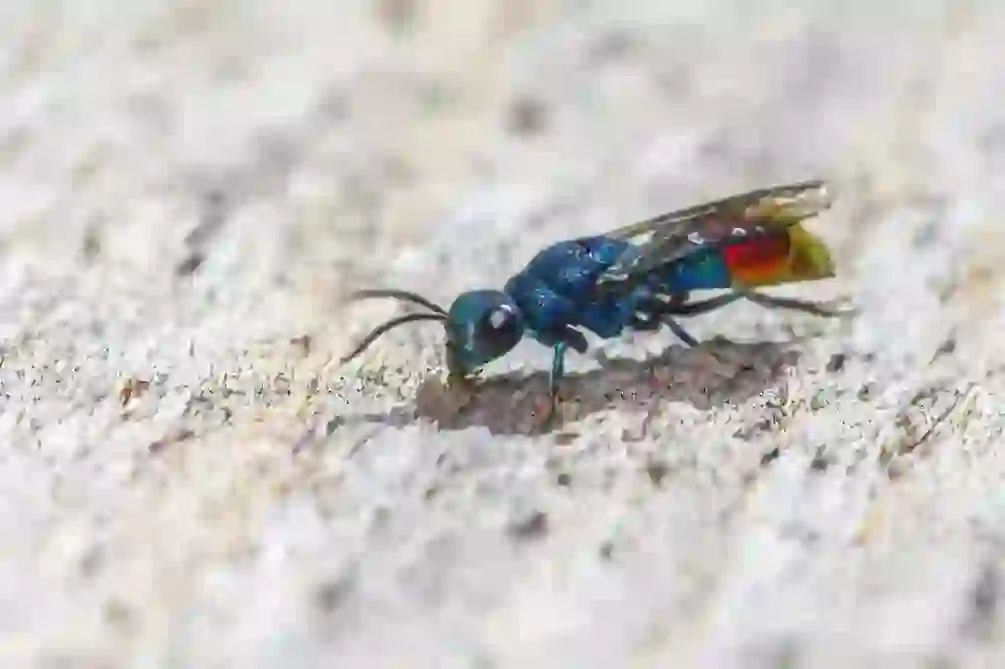
Butterfly
Butterfly
Butterfly
The beautiful butterfly flutters from flower to flower, completely different from its appearance as a caterpillar or larva. The transformation from caterpillar to chrysalis to butterfly is full of wonder and mystery. Let's go and search for the mysteries of the butterfly that make us want to ask, "How do they know that?" and "How do they do that?"
Butterfly Basic Infomation

Order Lepidoptera, Superfamilies Hesperioidea (Skippers), Papilionoidea (True butterflies)
Wingspan ranges approximately from 5 mm to 28 cm
Butterflies are found almost everywhere in the world except for Antarctica, areas above 6000 meters in elevation, and the central parts of deserts. There are about 18,000 to 20,000 species of butterflies worldwide, with around 250 species residing in Japan. Butterfly larvae (caterpillars) vary in their choice of plants for food and methods of defense against predators depending on the species (or subspecies). These small creatures harbor incredible wisdom and strength to survive in harsh natural environments.
Butterfly Q&A

What are the world's smallest and largest butterflies?
Among the smallest butterflies in the world are the Dwarf Blue, Chichakka Lycaenid, and Taiwan Lycaenid, with wingspans of about 1.2 to 1.5 cm. The Taiwan Lycaenid was discovered in Yonaguni Island, Okinawa, Japan in 2003 and is thought to have flown from Taiwan. Since then, it has also been observed in Iriomote and Ishigaki Islands.
The Queen Alexandra's birdwing is known as the world's largest butterfly, residing only in limited areas of Oro Province in eastern Papua New Guinea. It has a wingspan of 20 to 28 cm, featuring a yellow abdomen and metallic blue that is dreamlike in beauty. However, due to its size and beauty, it has been heavily poached and is at risk of extinction due to deforestation. It is currently listed as an endangered species, and trading is prohibited.

What is the world's oldest butterfly?
The oldest known butterfly or moth ancestor fossils date back to 201 million years ago, found in layers in northern Germany. This finding was published in the research paper "Lepidoptera in the Triassic-Jurassic boundary" by van Eldijk & van de Schootbrugge et al. Imagine, during the era of dinosaurs, the ancestors of butterflies were fluttering in the air, a thought that is simply wonderful.

How are butterflies different from moths?
Butterflies and moths belong to the same Lepidoptera order and cannot be distinctly separated. In Japanese and English, butterflies are called "butterflies" and moths "moths," but in French both are called "papillon," and in German and other languages, the same word may be used for both.
Typically, butterflies are diurnal, while most moths are nocturnal, though there are nocturnal butterflies like the shak moth mimic. Butterflies usually rest with their wings closed, and moths with their wings open, although some butterflies like the swallowtails and pierids may rest with their wings spread. Additionally, when trying to warm up in the sun, butterflies may spread their wings. Butterflies generally have slender bodies with clubbed antennae, whereas moths often have thicker bodies with variously shaped antennae, including pointed, comb-like, or thread-like. However, some butterflies, like the skippers, have thick bodies and pointed or curved antennae. While butterflies are perceived as colorful and moths as dull, there are indeed dull-colored butterflies and brightly colored moths.

What do butterfly larvae eat?
Butterfly larvae feed on different host plants depending on the species. For example, among swallowtail butterflies, the Common Yellow Swallowtail feeds on Rutaceae, the Blue Triangle on Lauraceae, and the Black Swallowtail on Apiaceae. Small larvae cannot move to search for their food, so the mother butterfly lays her eggs on the plant she fed on. Offering larvae anything other than their host plant can lead to refusal to eat or even poisoning and death.

How do mother butterflies distinguish their host plants?
So how do mother butterflies distinguish their host plants? You might have seen a butterfly tapping a leaf with its foreleg. This behavior, known as 'drumming,' is how they confirm whether it's the right plant to lay eggs on. Many butterflies have sensory hairs on the underside of their forelegs, which they use to "taste" chemicals while drumming, allowing them to determine if it's a suitable place for their eggs (whether it's their host plant).

Why do different butterflies have different host plants?
Plants cannot flee from insects or birds that attempt to eat them, so they have evolved to produce toxic substances for self-defense. Butterflies must overcome these toxins to feed on the plants. However, it's challenging to adapt to many types of toxins, so they have evolved to overcome the toxins of specific plants. The Common Yellow Swallowtail can detoxify the toxins produced by Rutaceae plants, and the Black Swallowtail can detoxify those produced by Apiaceae, allowing them to feed on these plants.

How do butterfly larvae defend themselves from predators?
Larvae are masters of mimicry. For instance, young Common Yellow Swallowtail larvae resemble bird droppings, but as they grow, they turn green and camouflage with leaves. When they become noticeably larger, they display frightening eye spots and inflate them when touched to intimidate predators. There are also sphinx moth larvae that mimic poisonous snakes. Some butterflies, like swallowtails, emit an unpleasant odor when touched, while others, like many in the Nymphalidae family, accumulate toxins from their host plants in their bodies to become poisonous. Some larvae, like those of skippers and brush-footed butterflies, cut leaves to make nests for hiding. Interestingly, some lycaenid butterflies secrete sweet nectar to attract ants, which then act as bodyguards for the larvae.

Do butterfly larvae and butterflies breathe?
Our breathing involves air entering our lungs, where oxygen is picked up by hemoglobin in the blood and transported throughout the body via blood vessels. However, insects do not have lungs. So, do they not breathe? No. Caterpillars and butterflies, like other insects, do breathe, but in a different manner. Insects have a network of tubes called 'tracheae' for air transport throughout their bodies. Both caterpillars and butterflies use these tracheae to breathe. If you observe closely, you can see pairs of small oval openings, called 'spiracles,' on each segment of their thorax and abdomen, through which insects breathe. Spiracles are equipped with muscles to open and close for air intake and are covered with fine hairs to prevent debris from entering.

Why do butterfly larvae molt?
Insects, unlike us, do not have bones inside their bodies; instead, they have an exoskeleton that supports their bodies from the outside. Since the exoskeleton cannot grow or stretch, it becomes too tight as the internal body grows. When this happens, a new, larger layer of skin forms inside, and the old, smaller skin is shed. The larvae often eat their shed skin, which is thought to be nutritious and to prevent predators from finding them by leaving the skin behind. After molting, the larvae appear loose and baggy, like wearing oversized clothes, but as they grow, the skin tightens, and they molt again. This process repeats until the larvae reach their final size before pupating. The number of molts varies by species, with blues and coppers molting three times, swallowtails and whites four times, and skippers more than five times before becoming a pupa and eventually emerging as an adult butterfly.

What do butterfly pupae look like in terms of shape and color?
There are two types of pupation: "belted" (taipupa), where the head is positioned upwards, and "hanging" (suipupa), where the head dangles downwards. An exception is the Parnassius, a member of the Papilionidae family, which makes a cocoon.
Butterfly pupae come in various colors. For instance, swallowtails and whites have protective-colored pupae that blend into their surroundings, coming in green, light brown, brown, and other colors. Overwintering pupae often appear in light orange or flesh-like colors. Meanwhile, some, like the Atlas moth, have specifically colored pupae, such as gold.

How do butterflies turn into pupae? Part 1: Pre-pupation
When the ravenous final instar caterpillar suddenly stops eating and defecates profusely, it's a sign of impending pupation. After the wet defecation, the caterpillar begins to search for a suitable place to pupate. Once it finds a spot, it spins silk from its mouth to fix its posterior end to create a "silk pad."
Swallowtails and whites, which become belted pupae, will then reposition their heads upwards, twisting and turning their heads while spinning silk over their upper bodies. After wrapping themselves multiple times with silk, they arch their backs in a dramatic "Ina Bauer" pose, transferring the silk to their back (thorax), ensuring a strong silk girdle to support them until they emerge as butterflies. This state, where the caterpillar becomes plump and motionless, is called the pre-pupa.

How do butterflies turn into pupae? Part 2: Molting
Once in the pre-pupal stage, the caterpillar's body gradually dries, and within a day to a few days, the back splits open to begin molting. Shedding its old skin, it transforms into a pupa. The pupa is a mold of the butterfly, with parts that will become antennae, legs, and wings, which are visible to the naked eye.

How do caterpillars transform into butterflies inside the pupae?
Caterpillars are born with a cluster of cells known as "imaginal discs," the precursors of butterfly body parts. Upon pupating, they dissolve most of their bodies into a liquid. This liquid nourishes the imaginal discs, which then divide and grow, forming the parts of the butterfly's body, such as wings, eyes, and antennae.

Is a butterfly the same individual as its caterpillar?
Yes. Even though a caterpillar's body dissolves and is reconstructed into a butterfly, the adult retains memories from its larval stage. This was demonstrated in an experiment by researchers at Georgetown University, where they conditioned sphinx moth caterpillars to avoid an electric shock associated with a specific smell. The caterpillars learned to flee from the scent alone, and this behavior persisted even after they became adults. The experiment suggests that a caterpillar's memories and nervous system are preserved through metamorphosis into an adult butterfly.
I've also had a similar experience while raising swallowtail caterpillars. A caterpillar that was particularly skittish remained so even after metamorphosing into a butterfly. Initially, I thought it sad that the caterpillar would dissolve into a different being, but now I'm convinced that it's the same life continuing from caterpillar to butterfly.

Are there pupae that cannot become butterflies?
Yes. Some caterpillars are eaten by predators. Others are stung by parasitic flies or wasps, which lay eggs inside them, preventing them from becoming butterflies. The parasites feed on the dissolved caterpillar fluids but result in the death of the caterpillar. Additionally, butterflies that fail to properly unfold their wings during emergence cannot survive, as they cannot feed themselves. Out of 100 eggs, only about one or two will successfully become butterflies.

How do butterflies emerge from their pupae (eclose)?
When a butterfly is ready to emerge, patterns on its wings become visible through the pupal casing in species like swallowtails. The moment of eclose arrives, and the butterfly breaks the pupal shell, emerging head and antennae first. It then extends its proboscis, which is initially in two pieces, curling and uncurling it until it fuses into one. Initially, the wings are wrinkled but are expanded by pumping body fluid into the wing veins. After the wings are stretched out, the red or brownish liquid that comes out from the rear is the excess body fluid. Once the wings dry, the butterfly takes its first flight.

How fast can butterflies fly?
The flying speed of butterflies varies by species. The Small White and swallowtails fly at speeds around 14 km/h, while skippers and nymphalids can reach speeds up to 50 km/h.

Why do butterfly wings have powdery scales?
Butterflies and moths have scales, called "scales," on their wings. These scales repel water, allowing them to fly even in the rain. They also play a significant role in thermoregulation. Dark scales absorb solar heat, aiding in body warming, while light scales prevent overheating. Additionally, the scales reduce air resistance during flight, aiding in wing flapping. Males also possess scent scales, which emit pheromones to attract females.
However, there are butterflies and moths with transparent wings, such as the glasswing butterfly, and those like the Atlas moth, which shed their scales soon after emerging to become transparent.

What do butterflies eat?
While caterpillars feed on leaves, adult butterflies primarily consume nectar for nourishment. Some, like the Purple Emperor, suck on tree sap instead of flowers. Occasionally, they may feed on ripe fruits, human sweat, or animal feces using their proboscis, a coiled, straw-like mouthpart evolved from jaws. How do butterflies find nectar or sap? They use their ultraviolet vision-capable eyes. Nectar reflects ultraviolet light, appearing dark green or black to butterflies, enabling them to hop from one nectar-rich flower to another.

How do butterflies survive the winter?
Butterflies employ different strategies for overwintering depending on the species. Some, like the Holly Blue, Common Blue, and White-letter Hairstreak, overwinter as eggs, while others like the Large White and Peacock larvae hide under dead leaves or burrow into the ground to hibernate. Still, others, like the Small White and swallowtails, overwinter as pupae. The Purple Hairstreak and some fritillaries spend the winter on the ground or in leaf litter, remaining motionless and hibernating.
Some butterflies, like birds, migrate to warmer climates to overwinter, covering long distances without hesitation. The Monarch butterfly travels from the United States to Mexico and back, covering up to 4,000 km, while many Painted Ladies born in Japan in summer migrate to the Southwest Islands or Taiwan, traveling about 2,000 km to overwinter. The ingenious ways butterflies have developed to survive harsh winters are truly fascinating.

Would you like to become a part of the 'Animalbook.jp'?
Turn your knowledge into Q&A and share it with the world. ※Publication will be activated after purchase. Let's share information together!
Butterfly Type of List

Burnet moth family: 1 family, 1 genus (Burnet moth) Skipper family: 1 family, 7 subfamilies (Chestnut Skipper, Daimyo Skipper, Mountain Skipper, etc.) Swallowtail superfamily (4 families) - Swallowtail family (Common Yellow Swallowtail, Black Swallowtail, Spicebush Swallowtail, etc.) - White family (Small White, Wood White, etc.) - Lycaenidae family (Common Blue, Large Blue, Holly Blue, etc.) - Nymphalidae family (Painted Lady, Common Tiger, Peacock, etc.)
Information
Congratulations! You are the first commenter!

Create Your Favorite List!
Butterfly
Save the animals you love! Build your own list to quickly revisit your favorites later.

Would you like to leave a comment?
※Please note: This is for the purchase of rights to post comments within the article.
Find Your Favorites!
Our shop offers a unique and attractive selection of goods themed around various animals.
Butterfly References

- ハイム蝶百科図鑑 https://butterfly.heimnohiroba.com
- papilio~蝶と自然と http://papilio.my.coocan.jp/index.html
- ウィキペディア フリー百科事典 The Page https://news.yahoo.co.jp/articles/f18f69949995f36386e686ec19891a628b17526e
- 蝶が食草を見分けるしくみを探る https://www.brh.co.jp/research/lab01/report/detail/42
- しぜんもんnacsj.net/magazine/post_751.html
- ぷてろんワールド 幼虫の護身術 https://www.pteron-world.com/topics/ecology/larva-strategy.html
- 村瀬新聞店 蝶の調べ http://sizen-tenpaku.com/cyou/index.html
- アゲハチョウの研究室 http://butterfly-beautiful.com/
- 大阪市とその周辺の蝶 http://butterflyandsky.fan.coocan.jp/
- 蝶の研究室butterfly-labo.biz
- サナギから蝶になるとき、なにが起こっているのか? https://logmi.jp/business/articles/190279?fbclid=IwAR3Upefx4p7C_5cnukGeDqrTeQ_kZTo0DcmZj2_gFGM2n73QCEPNgMMbUto
- ナゾロジー https://nazology.net/archives/18705
- レファレンス共同データベース https://crd.ndl.go.jp/reference/modules/d3ndlcrdentry/index.php?page=ref_view&id=1000223259
- 昆虫DNA研究会ニュースレター No. 5 http://www12.plala.or.jp/s3t45h86a9g8xyz6/FolderHP/10.sanagi.pdf
- 日本大百科全書(ニッポニカ) 小学館 1993
Butterfly Introduction of media used
出典:https://pixabay.com/videos/id-24429/
出典:https://pixabay.com/videos/id-37350/

出典:https://pixabay.com/images/id-3495224/

出典:https://pixabay.com/images/id-2712149/

出典:https://pixabay.com/images/id-159935/

出典:https://pixabay.com/images/id-2157752/

出典:https://pixabay.com/images/id-2604350/

出典:https://pixabay.com/images/id-2101478/

出典:https://pixabay.com/images/id-1549008/

出典:https://pixabay.com/images/id-2653198/

出典:https://pixabay.com/images/id-329100/

出典:https://pixabay.com/images/id-329050/

出典:https://pixabay.com/images/id-5360114/

enemy
出典:https://pixabay.com/images/id-5539555/

出典:https://pixabay.com/images/id-329377/

出典:https://pixabay.com/images/id-564564/

出典:https://pixabay.com/images/id-5785507/

出典:https://pixabay.com/images/id-2090363/

Help Enrich Our Animalbook.jp with Your Media!
We are constantly looking to expand and enrich our Animalbook.jp with amazing photos and videos of animals. If you have any media that you'd like to share, please contribute and help us showcase the beauty and diversity of the animal kingdom. Your submissions will be credited and featured in our encyclopedia, reaching a wide audience of animal lovers.


















